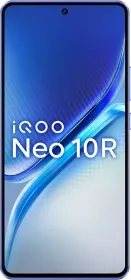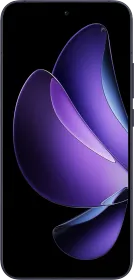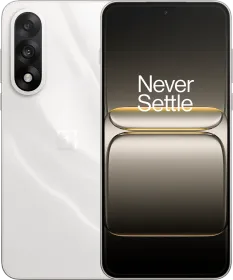Today, we’re reviewing the iQOO Neo 10R, a phone that’s entering a very competitive space. Under ₹30,000, there are already plenty of performance-focused phones like the POCO F6, realme GT 6T, OnePlus Nord 4, OnePlus 12R, and POCO X7 Pro—all packing serious hardware. So, can the Neo 10R stand out?
On paper, it does bring a few advantages. You get a massive 6,400 mAh battery, Snapdragon 8s Gen 3 processor, and 3 years of major updates with 4 years of security patches—which is good but also something rivals offer.
But is the iQOO Neo 10R just about gaming, or is it a complete all-rounder? How are the cameras, speakers, display, and overall experience? Let’s dive into the full review and find out.
iQOO Neo 10R Price & Availability
The iQOO Neo 10R comes in two finishes—Raging Blue and MoonKnight Titanium. It’ll be available on Amazon, iQOO Store, and retail outlets. It is available in three RAM and storage configurations:
- 8/128 GB: ₹27,999
- 8/256 GB: ₹28,999
- 12/256 GB: ₹30,999
iQOO Neo 10R Review: Pros & Cons
Pros
- Good display
- Unique design
- Good performance
- Decent haptics
- Good battery life
- Fast charging
Cons
- Software could use some work
- Thermals could’ve been better
- Videos could use less oversaturation
- Bloatware cannot be uninstalled
iQOO Neo 10R Specifications
- Display: 6.78-inch AMOLED, 120 Hz, 1200 Nits HBM, 4500 Nits peak, 2800 X 1260, 452 PPI, Schott Xensation Up
- SoC: Snapdragon 8s Gen 3 (1 x 3 GHz + 4 x 2.8 GHz + 3 x 2 GHz, Adreno 735, TSMC 4 nm)
- RAM: 8/12 GB LPDDR5X
- Storage: 128 GB UFS 3.1, 256 GB UFS 4.1
- Main Camera: 50 MP Sony IMX882, 1/1.95-inch, f/1.8, OIS, AF, 26mm, 4K30/60
- Ultra-wide Camera: 8 MP GalaxyCore GC08A3, 1/4-inch, f/2.2, FF, 16mm, 1080p30
- Front Camera: 32 MP GalaxyCore GC32E1, 1/3.1-inch, f/2.45, 28mm, FF, 4K30
- Speakers: Stereo speakers with earpiece
- Battery and Charging: 6,400 mAh, 80W wired
- IP Rating: IP65
- Connectivity: 5G, Wi-Fi 6, Bluetooth 5.4, USB 2.0
- Biometrics: Under-display optical fingerprint, 2D face unlock
- Weight and dimensions: 196g/ 163.7 x 75.8 x 7.98 mm
- Build: Plastic back, plastic frame
iQOO Neo 10R Review: Unboxing

Opening the iQOO Neo 10R box, you’ve got the iQOO Neo 10R itself, an 80W Flash Charger, a USB-A to USB-C cable, a SIM ejector tool, some paperwork, a clear case, and a pre-applied screen protector. That’s the full unboxing experience.
iQOO Neo 10R Review: Design and Build

Talking about the design of the iQOO Neo 10R, we have it in the Raging Blue color, and it looks quite nice. It has a dual-tone finish—white and blue—with a strip in between that carries the iQOO logo, “NEO,” and “Power to Win” text, which is visible only at certain angles.
The back features a squircle camera module with a 50 MP + 8 MP dual camera setup, an OIS marker, and an LED flash. On the right side, you get power and volume buttons, positioned well and easy to reach. The left side is clean.

At the bottom, there’s a dual nano-SIM tray, microphone, USB 2.0 port (off-centered), and primary speaker. On the top, there’s the earpiece, an extra microphone, and an IR blaster—a good addition for remote control use.
Both Raging Blue and MoonKnight Titanium variants are 7.98 mm thick, made of polycarbonate, and weigh 196 grams. The polycarbonate back is prone to scratches and dents and it picks up those very easily (I noticed minor scratches from a single drop).
For display protection, it uses Schott Sensation Up glass, which is good to see.

The phone feels comfortable to hold, with flat sides, but edges are smooth, so nothing sharp or uncomfortable. It feels like a typical large phone, and if you’re used to that, no issues here.
One downside—the back picks up smudges easily. But overall, a good in-hand feel, well-built despite being plastic.
iQOO Neo 10R Review: Display

As for the display on the iQOO Neo 10R, it’s a 6.78-inch 1.5K OLED panel with a 2800 x 1260 resolution. The HBM brightness is 1200 Nits, and in regular outdoor use, brightness is good—no issues unless you’re under harsh sunlight. The peak brightness is listed as 4500 Nits, but that’s gimmicky and practically useless.
The display supports HDR10+, and HDR works in YouTube, Netflix, and Amazon Prime Video. You get a 120Hz refresh rate, but sometimes it even touches 144 Hz (the display panel is actually TCL C8 144 Hz).

However, out of the box, most apps (including system apps) run at 60 Hz or 90 Hz, even in High mode. You have to manually set 120 Hz for each app, which is annoying. The display PWM is 3,840 Hz, making it easy on the eyes.
Bezels are uneven—the bottom chin is thicker, and top bezels are slightly thicker than side ones, but acceptable for this segment. Since it’s an OLED, you get deep contrast and rich colors, though by default, colors are slightly saturated.

Touch response is good—130 Hz normally, and 300 Hz while gaming, though in real-world gaming tests, it seemed capped at 120 Hz or 180 Hz. Overall, it’s a good display for the price.
iQOO Neo 10R Review: Speakers and Haptics

The speakers on the iQOO Neo 10R are reasonably loud, though there’s no extra volume boost like some other iQOO phones. Still, loud enough for daily use, and the tuning is decent, acceptable for the price.
Surprisingly, the haptics are better than expected—not as good as POCO F6, OnePlus Nord 4, or realme GT 6T, but much better than other iQOO devices like the Z9 series.
iQOO Neo 10R Review: Software

The iQOO Neo 10R runs on Funtouch OS 15 based on Android 15, and the company promises 3 years of OS updates and 4 years of security updates, which is solid for this segment.
The software experience is quite familiar if you’ve used iQOO or vivo phones before. You get the usual control center, along with some new lock screen customizations where you can also mask the LED with the lock screen.

There’s multi-window support, and a handful of AI features like AI Erase, Super Document (a rebranded older feature), and Image Cutout where you can tap and hold objects to create instant cutouts. There’s also an AI Notes feature that lets you rewrite, reorganize, and reformat notes.
Additionally, you get Circle to Search, which lets you circle any element on screen to search it instantly, and Link to Windows for easy PC connectivity. There’s also AI Transcription in the Recorder app for quick transcriptions.
The default dialer supports automatic call recording, though it lacks more advanced call screening features found on higher-end models like the iQOO 13.
The animations are smooth, with background blur effects (you have to enable it from the Settings), app opening/closing transitions, and wallpaper scaling. However, some basic features are missing—like manual rearrangement of quick toggles, which should have been there.
For gaming, there’s a new mode that shows FPS, bypass charging, and other gaming-centric features tied to BGMI, but there’s no overlay-style gaming dashboard, which some might expect.
There’s also the usual Funtouch OS bloatware—vAppStore, vivo Browser, Theme Store, Jovi Home, etc, which cannot be uninstalled or disabled. There’s also pre-installed apps like Amazon, Facebook, LinkedIn, Snapchat, Netflix, and PhonePe.
iQOO Neo 10R Review: Biometrics

The iQOO Neo 10R comes with an in-display optical fingerprint scanner, and it works well—fast and accurate, with no major issues. The placement is similar to most phones in this segment, though a bit on the lower side, but nothing deal-breaking.
You also get 2D face unlock as an alternative, which works fine for casual use but isn’t as secure as the fingerprint scanner. Overall, biometrics are reliable and quick, matching what you’d expect at this price point.
iQOO Neo 10R Review: Performance

The iQOO Neo 10R really shines when it comes to performance. It is powered by the Snapdragon 8s Gen 3 processor, which was first seen on the POCO F6 and now makes its way to this device. The chipset has a 1x 3 GHz prime core, 4x 2.8 GHz performance cores, and 3x 2 GHz efficiency cores, along with the Adreno 735 GPU, all built on TSMC’s 4nm process.
The device comes with 8 GB or 12 GB of LPDDR5X RAM, and 128 GB UFS 3.1 storage or 256 GB UFS 4.1 storage. So, if you’re going for the 128 GB variant, you will only get UFS 3.1—not UFS 4.1, as some people might expect.
Synthetic Benchmarks
The iQOO Neo 10R scored 1871 (single-core) and 4678 (multi-core) on Geekbench 6. In AnTuTu, it scored 1,354,976 points, while in the AnTuTu storage test, it got 170,291 points, with sequential read speeds of 3,021 MB/s and write speeds of 3,076 MB/s, which are lower than typical UFS 4.0 results, despite the UFS 4.1 claim.
On 3DMark Wildlife Extreme, it scored 2,143 points, and in the stress test, it reached 2,051 (best loop), 1,628 (lowest loop), with 79.4% stability. The temperature rose from 37°C to 41°C during these tests.
We also ran the 50-thread, 30-minute CPU throttling test, and got an average GIPS of 336,126, while the CPU throttled to 80% of its max performance.

Gaming Performance
When it comes to gaming performance, the iQOO Neo 10R is very well optimized for BGMI. If you’re a BGMI player, this phone will keep you satisfied. It supports 90 FPS in BGMI, and even during long gaming sessions, there are no major heating issues. In our testing, the phone maintained an average of 87.6 FPS, and temperatures stayed under 39.8°C, which is impressive.
Update: 120 FPS support for BGMI added on March 13. Testing pending.
Additionally, the device comes with several BGMI-specific features in the game mode, including FPS stats (no overlay yet), performance tuning options, and bypass charging to avoid battery heat while gaming. These features help maintain consistent performance during extended play.

However, Genshin Impact is poorly optimized on the Neo 10R. Despite using the Snapdragon 8s Gen 3, the phone struggles to handle Genshin Impact smoothly. In our test at highest settings and 60 FPS mode, the game averaged only 43-44 FPS.
There were also noticeable frame drops during intense scenes. More concerning is the thermal performance, as the phone’s temperature climbed beyond 44°C, only after 5 to 10 minutes of gameplay, which is really concerning. I’ve also noticed some unusually high temperatures during casual use, so that needs to be addressed as well.
So, if BGMI is your main game, the Neo 10R delivers a good experience. But for titles like Genshin Impact or Wuthering Waves, expect performance issues, frame drops, and heating problems, at least for now. Hopefully, iQOO irons out these issues with a future update.
iQOO Neo 10R Review: Cameras

The iQOO Neo 10R features a 50 MP + 8 MP dual rear camera setup and a 32 MP selfie camera. This is the standard camera setup that you get in this price segment.
Main Camera
The main 50 MP rear camera uses the Sony IMX882 sensor with f/1.79 aperture, OIS, and autofocus. In daylight, the main camera performs well with good details and minimal over-sharpening. Colors tend to be slightly saturated, but there’s a Natural mode if you prefer toned-down colors.
You also get Vivid and Textured modes, though Natural is the default. HDR performance is decent, but struggles when bright skies are in the background—often underexposing shadows. The 2X crop in daylight is also good enough, although it doesn’t carry the same details as the 1X shots.












The low-light performance is weak, showing noticeable noise, lack of detail, and unappealing contrast. That said, the iQOO Neo 10R performs better than some of the other phone in the segment like the POCO X7 Pro.






Ultra-wide Camera
The 8 MP ultra-wide camera (1/4 inch sensor, f/2.2 aperture, fixed focus) delivers usable photos in daylight with acceptable HDR. However, in low light, it struggles heavily with soft details and heavy noise.





Front Camera
The 32 MP front camera (1/3.1 inch sensor, f/2.45 aperture, 28mm focal length) is a highlight. Daylight selfies show good detail and decent skin tones, although HDR can sometimes falter.
In low light, details become soft, and noise is visible, but still within acceptable limits. You can zoom up to 2X in daylight selfies but with some quality loss. However, due to the 28mm focal length, framing group selfies is challenging unless you stretch your hand far. A wider focal length (like 25-26mm) would’ve been better.



Portraits
Portrait shots from the main camera are decent. Skin tones are usually a bit on the brighter side, but edge detection is fine—not exceptional, but not disappointing either. You can shoot portraits at 1X or 2X crop, and there are plenty of filters to play with. The shutter speed is fast enough, too.


Videos

When it comes to video, the main camera can shoot at up to 4K60, while ultra-wide is capped at 1080p30, and the selfie camera supports 4K30. Standard stabilization is available in 4K and 1080p, but ultra-stabilization works only in 1080p30.
However, standard stabilization feels average with noticeable EIS jerkiness, especially in low light. While videos are fine overall, colors are often over-saturated, and there’s a lack of consistency in color when switching between ultra-wide and main cameras.
Ultra-wide video is okay in daylight, but poor in low light. Stabilization works well during the day. The selfie videos are decent, but the narrow 28mm field of view makes it tough to fit more people or background in the frame without stretching your arm uncomfortably. Plus, the stabilization isn’t great.
iQOO Neo 10R Review: Battery Life and Charging

The iQOO Neo 10R comes with a massive 6,400 mAh battery, making it one of the largest batteries in this price segment. What makes it even more impressive is that iQOO has managed to pack this large single-cell battery into a slim 7.98 mm body, which is quite a feat in itself.
The phone supports 80W FlashCharge technology (Li-ion), and you get the 80W charger in the box. In terms of charging speeds, the iQOO Neo 10R charges from 6% to 100% in about 48 minutes, which is fast and efficient for such a large battery. On average, a full charge takes around 50 to 55 minutes.
Talking about battery life, the phone performs adequately. With normal usage on Wi-Fi and basic display settings, you can expect around 8.5 hours of screen-on time (SoT). If you switch to mobile data or engage in moderate-heavy tasks, the SOT drops to about 6 to 7 hours.

While the battery life is decent for day-to-day use, considering the 6,400 mAh capacity, it could use better optimization to deliver longer endurance. Overall, charging speed is excellent, but battery life, though good, has room for improvement through software optimization.
Review Verdict: Should You Buy the iQOO Neo 10R?
The iQOO Neo 10R brings a lot to the table—powerful Snapdragon 8s Gen 3 performance, a vibrant 1.5K AMOLED display, solid battery life with fast charging, and a unique design that stands out in its segment.
However, it’s far from perfect. The cameras are inconsistent, video recording needs work, thermals under heavy load are concerning, and Funtouch OS still comes with a lot of bloatware that can’t be removed.
If your focus is good BGMI ganeplunder ₹30,000, the Neo 10R is a solid choice. But if you’re after a well-rounded device with better cameras, software, and thermal management, options like the POCO F6 or OnePlus Nord 4 might serve you better.

Smartprix ⭐ Rating: 8.0/10
- Design and Build: 8/10
- Display: 8.5/10
- Speakers: 8/10
- Software: 8/10
- Haptics: 8/10
- Biometrics: 8/10
- Performance: 8/10
- Cameras: 7.5/10
- Battery Life & Charging: 8/10
First reviewed in March 2025.
































